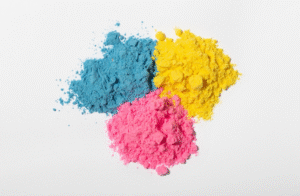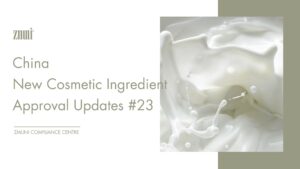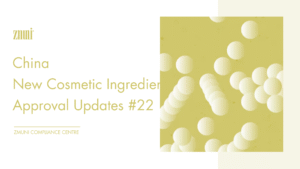+86 571 8659 2517
+86 180 5841 8258
info@zmuni.com

On October 23, 2025, China's General Administration of Customs (GACC) released its list of non-compliant imported food products for September 2025. A total of 443 batches from 45 countries and regions were denied entry, representing a month-on-month decrease of approximately 28% (down 174 batches from 617 in August) and a year-on-year decrease of about 6% (down 28 batches from 471 in September 2024). Key Issues Identified: The main problems were concentrated in the following areas: non-compliant labeling (16.5%), detection of melengestrol acetate (12.6%), discrepancies between goods and certificates (9.0%), registration issues with foreign manufacturers (7.0%), and failed sensory inspections (6.8%). Additional concerns included detection of animal diseases, furazolidone metabolites, sodium metabisulfite, parasites, and unauthorized

China is strengthening oversight of imported food, particularly products entering through cross-border e-commerce channels. A recent enforcement inspection report, released during the 18th session of the Standing Committee of the National People's Congress, highlights regulatory gaps that could directly affect foreign companies' market access and long-term compliance stability. While China has made notable progress in food safety governance over the past decade, including regulatory frameworks, standards, and enforcement capabilities, the report underscores that imported foods remain a key compliance challenge as authorities shift from "convenience-focused management" to more detailed, risk-based oversight. Key Compliance Challenges for Imported and Cross-Border Foods The report identifies three

The global cosmetics regulatory environment continues to evolve. To help businesses stay updated with regulatory changes, ZMUni Compliance Center regularly releases a monthly recap of global cosmetics regulations. This article covers the regulatory developments related to cosmetics in China and globally in October 2025, with an emphasis on updates in cosmetic ingredients and cosmetic management, among other areas. China Cosmetic Regulatory Updates New Cosmetics Ingredients (NCI) In October 2025, 17 new cosmetic ingredients were notified with the China National Medical Products Administration (NMPA). They include: To learn more about these NCIs and their respective companies, check out the following episodes: Issue 23: Actives

On October 30, 2025, the China National Medical Products Administration (NMPA) approved two new registered cosmetic ingredients: one whitening agent and one colorant. These are the second and third ingredients approved under China's CSAR, following Beiersdorf's Thiamidol630 in November 2024. Whitening Agent Dimethoxytolyl propylresorcinol (registration number: "国妆原注字20250002), was registered by Unigen Inc. Founded in 1996 and headquartered in Washington State, USA, Unigen Inc. is a company specializing in the research, development, and manufacture of natural active ingredients, with applications in dietary supplements, prescription drugs, and personal care products. As announced by China NMPA, Dimethoxytolyl propylresorcinol has been registered as a whitening agent.

From October 25 to 31, 2025, 3 new cosmetic ingredients (NCIs) were notified with the China National Medical Products Administration (NMPA). The technical requirements for the 3 new cosmetic ingredients mentioned above have not been disclosed, and they have not yet entered the safety monitoring period. Bakuchiol Bakuchiol is a high-purity ingredient extracted and purified from crushed Psoralea corylifolia seeds to remove impurities and solvents. It functions as an antimicrobial, antioxidant, emollient, and skin-conditioning agent. Since the first bakuchiol ingredient was notified in August 2022, a total of eight notificationns have been recorded to date. According to data from the China Association of Fragrance Flavor

From October 16 to 24, 2025, 4 new cosmetic ingredients (NCIs) were notified with the China National Medical Products Administration (NMPA). The technical requirements for the 4 new cosmetic ingredients mentioned above have not been disclosed, and they have not yet entered the safety monitoring period. Another noteworthy update is that on October 20, 2025, the NMPA released the second dynamic adjustment of the Inventory of Existing Cosmetic Ingredients in China (IECIC) this year, which involved the inclusion of three new cosmetic ingredients in the IECIC List II (bringing the total to five). For details, please refer to our previous article: China Existing

On October 20, 2025, China's National Institutes for Food and Drug Control (NIFDC) launched the first batch of new cosmetic ingreidents (NCIs) for innovation guidance. The selected NCIs were chosen based on four key criteria: first-to-market, Chinese characteristics, domestic substitution, and green low-carbon development. This initiative aims to implement the Several Provisions on Supporting Cosmetic Ingredient Innovation and strengthen services for the innovation and application of new cosmetic ingredients. Note: Being included in the innovation guidance list does not indicate that an ingredient's safety or quality has been approved. R&D must still comply with relevant regulations, and

On October 20, 2025, China's National Medical Products Administration (NMPA) announced a three-year pilot program for electronic cosmetic labels, marking a significant step toward the digital transformation of cosmetic labeling in China. The pilot will begin on February 1, 2026, and will be implemented in Beijing, Shanghai, Zhejiang, Shandong, Guangdong, and Chongqing. The duty-free cosmetics pilot on Hainan Island, launched locally in September 2024, may also be carried out under the new NMPA requirements. The pilot aims to optimize labeling management, enhance consumer access to product information, address the needs of elderly users, and facilitate business operations,
+86 571 8659 2517
+86 180 5841 8258
info@zmuni.com